The Long War, Part 36 / The Bocskai Uprising, 1604
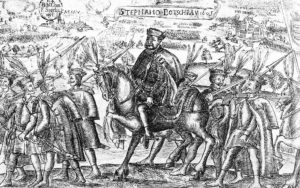
For many years, Transylvania was the theatre of war between the Empire and the Turks. Candidates for the throne of the principality faded away, failed, and died in the battles. After the defeat of Székely Mózes, all his surviving followers fled to the Turks. Among them was the young Bethlen Gábor, the future prince of Transylvania. General Basta scattered the remains of Székely’s Transylvanian-Turkish troops at the Vaskapu Pass (Porțile de Fier) in August 1603. Basta’s reign began and he ruthlessly carried out the orders of the Prague court.
He retaliated against the nobles who opposed the court, persecuted the Protestant priests, increased taxes immensely, and did not care about the privileges of the Székely guards or the acquired or traditional rights of any other estates in Transylvania. (Please note that I am using the Oriental name order for Hungarians, where the surname comes first).
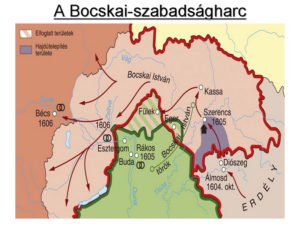
Only one candidate for the Transylvanian throne was left, the pro-Habsburg captain of Várad, Bocskai István, uncle of the former prince Báthory Zsigmond. He was the only man left in Transylvania who seemed strong enough to lead a movement against the Imperial rule and the cruel mercenaries. But the court in Prague wavered in Bocskai, he was not even allowed to return home for a short time, and his possessions were confiscated by the Transylvanian estates.
He must have felt that his previous loyalty was no longer recognized in Prague. On his return, he retired to his estates in the Partium region (between Hungary and Transylvania). From there he followed the Transylvanian struggle. Bocskai, a Reformed man, no longer held any offices. Slowly he began to share the opinion of those who wanted to side with the Turks.

On the night of 13 September 1604, some Hajdú soldiers loyal to the Habsburgs raided the area around Temesvár (Timisoara). They ambushed the rebels and young Bethlen Gábor fled, leaving his cloak in his tent. The Hajdús found a letter in Bethlen Gábor’s pocket, stating that Bocskai had been corresponding with the Turks. However, it is believed that the whole thing was Bethlen’s trick to get Lord Bocskai involved in politics again: he had deliberately “forgotten” the documents in the tent…

Bocskai had to make a move. He would not have wanted to be captured by the chief captain of Kassa (Kosice, Kaschau), Giacomo Barbiano, Count of Belgiojoso, who had been quite hostile to him. Belgiojoso was appointed governor of Upper Hungary in 1593 and was also the commander of the town of Kassa. On 6 January 1604, his soldiers seized the city’s Saint Elizabeth Cathedral and handed it over to the Roman Catholics, angering the Protestant citizens of Kassa. General Giacomo Barbiano di Belgiojoso thus turned the local lords, including Bocskai, against the emperor.

Later, the commander needed money and sent a letter to Bocskai asking for a loan: it was a large sum, 20,000 gold forints. When Bocskai refused, Belgiojoso became his mortal enemy. No wonder Belgiojoso took Bocskai’s letters and reported him to the Emperor for treason. Unable to explain himself, Bocskai was forced to gather his forces and take up arms. He prepared to resist and called his castellans, Székely Ferenc and Örvéndy Pál, to reinforce his castles in Kereki and Szentjobb.
However, this meeting aroused the suspicion of the captain of Várad (Oradea), Cipriano Concini, who hastily reported it to Belgiojoso. Then Székely Ferenc betrayed Bocskai and ceded Szentjobb Castle to Concini on 2 October, but the captain of Kereki Castle, Örvendy Pál, resisted. We know that Captain Örvéndy Pál recruited 300 Hajdús under Bocskai’s banner. Belgiojoso demanded that Bocskai hand over Kereki, who refused, although he continued to prove his loyalty to the Habsburgs. Bocskai tried to apologize to Belgiojoso in a letter, but he could not talk his way out of the situation. Finally, Bocskai realized that he had no choice but to take up arms.

Belgiojoso gathered his Hajdú soldiers and paid the money owed to the emperor. He told them of Bocskai’s treachery and made them swear an oath against him. However, the Hajdú soldiers (all of them also Reformed) decided on 14 October to join Bocskai instead. On that day five Hajdú captains, Lippai Balázs, Ibrányi Ferenc, Dengelegi Mihály, Szénássi Mátyás, and Némethi Balázs signed a document declaring their loyalty to Bocskai. They said they “did not want to become the executioners of their own Homeland”, but let us not forget that Bocskai promised them more reliable and regular pay and that they, like Bocskai, were of the Reformed faith.
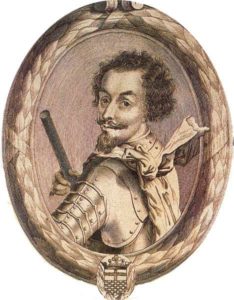
The first fight at Álmosd
Belgiojoso designated the Imperials’ rendezvous point near Adorján, from where he planned the concentrated attack on Bocskai. Colonel Johann Petz’s unit arrived in Álmosd on the morning of the 14th. Here he received the order to join the main army. At midnight on the 14th the military column left for Adorján. Colonel Johann Petz had 2,000 infantry and 600 Silesian cavalry with 9 cannons. The unit was of mixed nationality and consisted mainly of newcomers. The march was long and the terrain was swampy and bumpy. Moreover, Petz did not follow Belgiojoso’s order to flank the infantry with cavalry.

But the Silesians had no intention of going slowly with their infantry. They were in a hurry to reach the Adorján camp as soon as possible, so they made haste and moved forward. Petz, who wanted to inspect the Ér bridge crossing the road at Diószeg, went with them. Behind the cavalry came the carts, followed by the cannons and then the infantry. The procession was completed by 150 horsemen. The marching column was about 5-6 km long.

In Diószeg, Petz even spoke to the Hajdús who had escaped from the Adorján camp. They showed peaceful intentions. However, these Hajdús soon joined Bocskai’s army, which was waiting to ambush them. As soon as the Imperial foot soldiers reached the swampy valley of the Ér, they were ambushed by about 3,000 Hajdús, but the battle lasted a long time. As the attack hit the center of the infantry, the others, and the cavalry were able to rush to their aid. The cavalry pushed the Hajdús back into the forest, but they could not pursue them there. The Hajdús regrouped and attacked again.
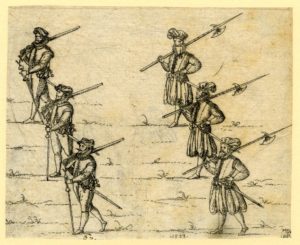
The attack was repeated eight times, but the Imperials defended themselves fiercely, and even the officers’ wives took up arms against the Hajdus. Finally, during the eighth attack, the Silesian cavalry fled, but many were drowned in the nearby marshes. Petz also tried to escape at dawn, but a “brave, enthusiastic young man, Ládonyi György” pursued and captured him.
After that, the Imperial infantry had to be broken, but they built a fort out of the wagons. The Hajdus were initially powerless against this. There was constant gunfire, and then an accident helped the rebels. The gunpowder stored on the wagon exploded. Taking advantage of this, the Hajdus stormed into the “castle” and slaughtered the Imperial soldiers.

Belgiojoso left the Adorján camp to help Petz, but the explosion of gunpowder at the infantry and the Hajdu victory scared him off. He fled back to Adorján and then to Várad in a panic. According to conflicting sources, the Imperials lost half their troops and the rest of the army was scattered. The cannons also fell into Bocskai’s hands.

The uprising that followed wiped out Habsburg rule in the trans-Tisza River region, with the exception of Várad Castle, which remained in Habsburg hands. Then Bocskai marched into Debrecen and Belgiojoso retreated towards Kassa, but when he tried to cross the Tisza at Rakamaz, the Hajdú soldiers defeated him again. Read more about the Hajdú soldiers on my page:
https://www.hungarianottomanwars.com/essays/the-hungarian-hajdu-warriors/

25 October 1604: The Hajdú soldiers of Bocskai defeated the army of Belgiojoso at Rakamaz
After the victory at Álmosd, Bocskai, and his army moved towards Debrecen. After this battle, Belgiojoso withdrew his army to Várad, but he didn’t feel safe there either, so he made his way to the center of the Hungarian Upper Land, to the city of Kassa (Kaschau, Kosice). Avoiding Debrecen as much as possible, he hurried to the ford at Rakamaz.
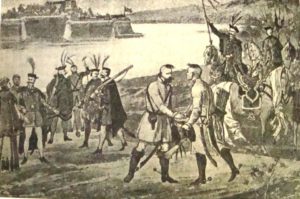
Still, the Hajdús were aware of his movements and didn’t hesitate to head for Belgiojoso. It was the evening of 24 October when they reached the Imperial Army, which was spending the night in its camp on the left bank of the Tisza. The next day, in the foggy dawn, the Hajdús ambushed the enemy’s rearguard, which consisted of Serbian soldiers. The battle was opened with the Hajdús’ mighty battle cry, the ancient “hujj, hujj, hajrá” (Hurrah, hurrah, onward!), and their attack swept away all resistance. They killed around 1,200 Serbian soldiers but saved the lives of the Hungarians among them.
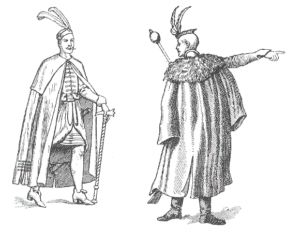
Belgiojoso was on the opposite bank and was afraid to send help, and the cannons of Tokaj Castle couldn’t help him either because of the thick fog. The Imperial General gave the order to destroy the pontoon bridge, thus blocking the way for the fleeing Serbs. Many of them died in the cold waters of the Tisza.

Now Belgiojoso sent Colonel Dampierre to the Hajdú soldiers to negotiate, as the colonel was very popular among them.
But according to the captain-in-chief, the Hajdús captain, Lippai Balázs, said nothing good to Dampierre, except “insults, meaningless things that were beside the point”. So Dampierre returned to his camp in vain.

Belgiojoso wanted to ask Homonnai Drugeth Bálint that evening if he had any soldiers left and how many he had in his camp at Szikszó. But the nobles of Upper Hungary had already sided with Bocskai. Instead of the Imperial army, they joined Bocskai with 3,000 new soldiers. Soon the castle of Kálló castle opened its gates to Bocskai, and its captain Káthay Mihály surrendered it to the rebels.
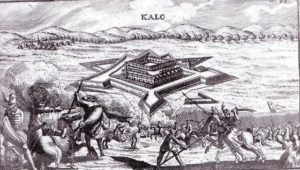
The chief captain of Upper Hungary, Belgiojoso, thought better of it and withdrew his men to Kassa, his headquarters. To his surprise, the people of Kassa wouldn’t let him enter the town. Belgiojoso threatened them in vain, but neither threats nor promises were accepted by the stubborn citizens. The people of Kassa remembered who had taken their church. Finally, the general had to send away his Walloon troops and his Silesian cavalry. The troops from Transylvania also deserted him. He had barely 30 men left, with whom he fled to the castle of Szepes (Spis).

Imperial General Giorgio Basta was camped opposite Esztergom castle at the time of the Battle of Rakamaz and received orders that day to go to the aid of Belgiojoso. He was also ordered to retake Kassa. However, these orders couldn’t have been carried out. We know that the castle of Kálló had joined Bocskai’s side, and soon the uprising of the nobles of Upper Hungary, led by Homonnai-Drugeth Bálint, joined him. On 11 November, Bocskai entered the deserted town of Kassa and set up his headquarters there. A certain nobleman fled to him from Poland, Illésházy István, who became his most important supporter.

As early as November, the Sublime Port had issued a princely “adhnamé” for Bocskai, a document or treaty in which he was appointed. Moreover, the Ottomans were already addressing him as the ‘King of Hungary’. Although the Hajdú troops lost two battles against Basta, at Osgyán and at Edelény, this did not stop the rebellion from spreading.
The Battle of Osgyán
In this battle, Basta defeated the forces of Németi Balázs, the captain of Prince Bocskai, on 14 November 1604. General Basta had 15-20,000 men, while the Hajdú captain had 4,000 peasants and 4,000 Hajdú soldiers. The Hajdú captain rode out with his cavalry to lure the attackers. Unfortunately, as he rode back home, followed by the enemy, his untrained peasant soldiers thought he was running away and began to flee. Németi (or Némethy) gathered his best men and entered the mansion of Osgyán to cover the retreat of his soldiers. Only 500 people were left alive in the ruined castle, and Basta offered them to leave for free, but he didn’t keep his word. The small palace was surrounded by a weak fence, and Basta soon destroyed the buildings with his cannons.

The defenders tried to escape, but in vain: most died in the attempt, and only a few managed to escape. Némethy was badly wounded in his left arm and taken prisoner. Basta wanted to know more about Prince Bocskai’s army, so he had Némethy hanged upside down from a tree, but the tough captain gave away nothing. He was then arrested and sentenced to death. When he was led to the executioner’s place, he grabbed the executioner’s sword and killed him, then slaughtered many more mercenaries before going under.
The story of the Battle of Osgyán can be read in more detail in my book here:

28 November: The Battle of Edelény
As for the battle of Edelény, it was the second battle that Bocskai lost to Basta. Basta was an Italian soldier of Albanian descent who had distinguished himself in the wars against the Protestants in the Netherlands and France. His mercenaries became notorious for their cruelty in Transylvania when Basta controlled it for a brief but bloody period. However, he and his 10,000 soldiers were able to defend Esztergom against an 80,000-strong Ottoman army. He was now sent against Bocskai and defeated his troops at Osgyán on 14 November. Basta set out to reach Kassa as quickly as possible.


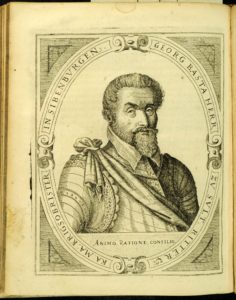
Bocskai, Prince of Transylvania
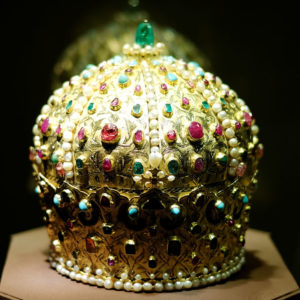
During the second half of the spring, the rebel troops moved westwards. They surrounded Érsekújvár (Nové Zámky), but Pozsony (Pressburg, Bratislava) proved too strong for them. However, the rebels managed to take the castles in the Vág Valley. The army of Némethy Gergely broke into Lower Austria and on its way back conquered the Hungarian counties of the West Transdanubian region. The gates of Sümeg, Szombathely, Körmend, Kőszeg, Veszprém, and Várpalota were opened and they were welcomed everywhere. Even Lord Nádasdy Tamás II sided with Bocskai.

Homonnai began the siege of Érsekújvár at the end of August, and the troops of Pasha Sinan of Eger were also in his army. However, Bocskai had to bear in mind that the Turks might want to take this important frontier fortress for themselves.
He thought of this because the fall of Esztergom Castle haunted him. Why? You can read more about it here:
https://www.hungarianottomanwars.com/essays/prince-bocskai-istvan/
Source: Szibler Gábor



